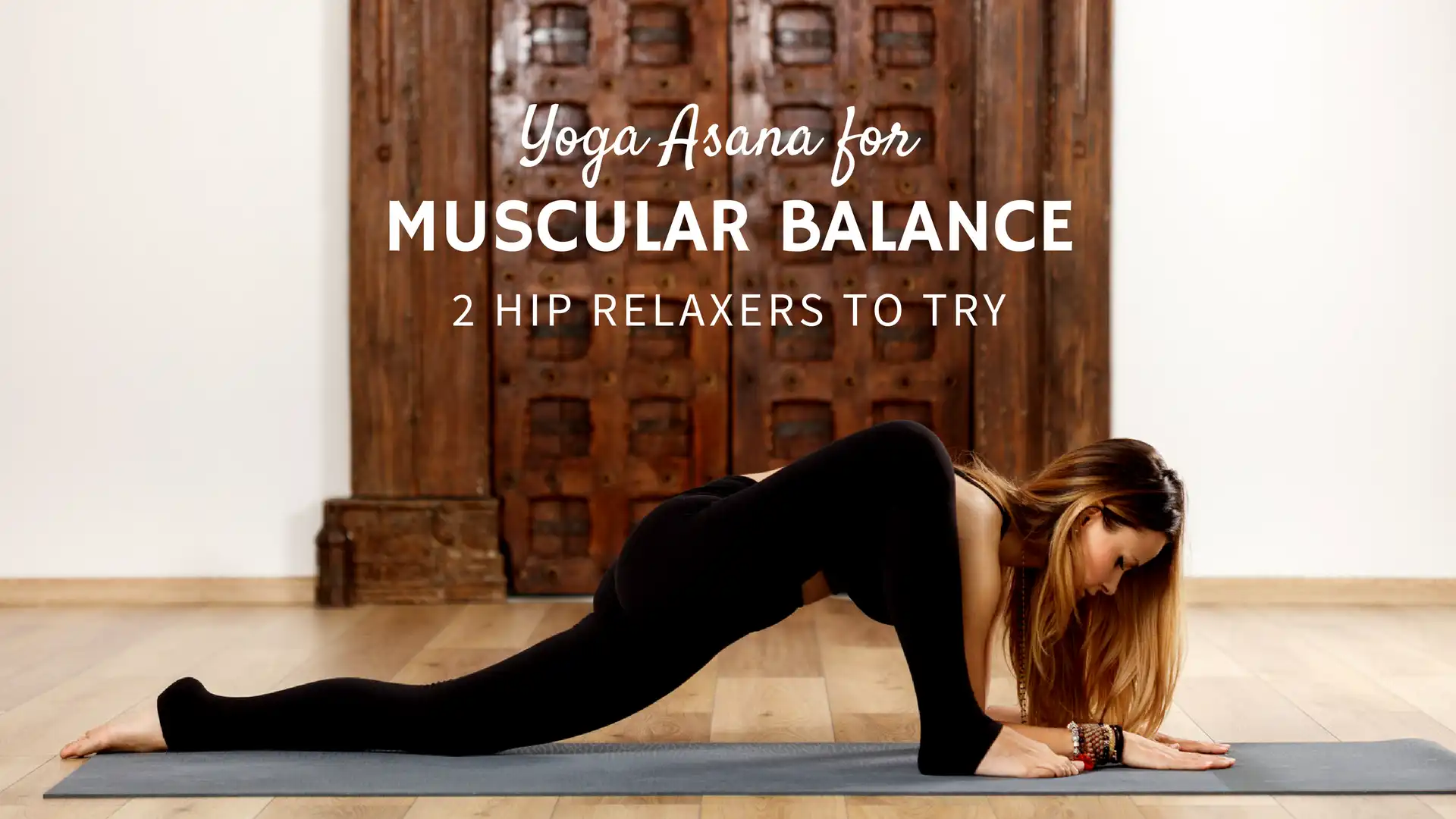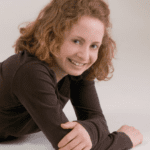Yoga Asana for Balance, Not Just Flexibility: 2 Hip Relaxers to Try

What do typical non-yoga practitioners in Western culture picture when they think of yogis? I daresay it’s people who’ve twisted their bodies into “pretzels,” their feet behind their heads or in some other seemingly impossible position. On the contrary, yoga practitioners in 2016 ran the gamut from preschool children to businessmen to senior citizens.
A minuscule percentage of those people can actually “get their feet behind their heads” and even participate in a class that leads them to try. For the most part, those who’ve practiced yoga know that the physical practice is just as much about strengthening. This blend of strengthening and stretching holds true to the underlying concept of yoga itself—working toward “union” (the rough translation of the word “yoga” from Sanskrit) through seeking balance, integration, and wholeness.
On the other hand, many asana classes open to the general public include poses that require joints to enter sometimes extreme ranges of motion, further than the joints are able to move in most people. Commonly taught poses such as these include “hip openers” (a questionable term in itself), such as Half King Pigeon Pose, Double Pigeon Pose, and Frog Pose. For those whose bodies can enter these poses, it’s actually not the most beneficial thing for them to actually do on a regular basis.
For the “bendy” among us, Yoga U Editor and Contributor Charlotte Bell advises thinking of these poses as the “fatty, sugary treat you allow yourself only once in a while.” In those ultimate goals of balance, wholeness, and integration, a truly effective yoga practice will be somewhat different for each of us. “Standing poses, balancing poses, strengthening poses, and modest backbends and forward bends are … sustenance,” says Bell for “bendy” folks.
On the other hand, gentle stretches for muscles fatigued from that work help maintain balance, as well as simply feel great. Even if practitioners think that they “don’t feel anything,” Bell explains how beneficial things are likely happening that are below the level of perception, yet happening nonetheless. Furthermore, sharpening one’s awareness of such subtlety is key to true yoga practice, she adds.
At the same time, these mild stretching poses can help the person on the mat next to that “Gumby” practitioner gently work into muscles and fascia around the hip joints, which may have tightened from long days of sitting at work (such as with tight piriformis muscles that can lead to painful complications such as sciatica). The following two poses offer that type of gentle hip stretch. For both (and all) practitioners, it’s all in that ultimate seeking of balance. Contrary to popular belief, yoga practice is not all about flexibility.
Try These 2 Hip-Opening Poses
What you’ll need: a mat, 2 blocks, 2 or 3 yoga blankets
Hold each pose for at least five breaths on each side (as long as you are not experiencing pain), and longer if you wish
Supported Pigeon Pose 
- Have your blocks within reach.
- Fold your blanket in half lengthwise and in half again. Place it just right-of-center on your mat the long way, going from front to back.
- Either come into the pose from Downward Facing Dog or from seated on your mat. Either way, with your knee bent, lay your right thigh on your blanket with the other leg extending behind you.
- Place your right shin parallel to the top of the mat but so that your knee and the top part of your shin are also supported on the blanket fold.
- If your right hip is not firmly planted on the floor, place a thick, folded blanket (one or more) under it so that your pelvis is completely supported. It is important to support your pelvis so that the weight of your upper body does not collapse down into the hips. This can create more stretch than your body is ready for.
- Slowly and mindfully lower your torso down, hinging at the hip joint and keeping your lower back mainly flat. Place your forearms on blocks if the floor feels far away, or place one under your head if it could use some support (so that there’s no feeling of strain in your neck, shoulders, or facial muscles).
- Breathe into the spaces where you feel a stretch. Perhaps smile a bit to yourself, knowing that you’re doing all of that while still fully supporting your joints and body overall.
Lizard Pose 
- Ensure that your blocks are still nearby, just in case you might need them. Take Runner’s Lunge, right foot forward, in between your hands. Your back knee can be up or resting on your mat, depending on your physical condition and present needs.
- Wiggle your right foot to the outside of your right hand (you might need to pick up your right hand to make room for the transition).
- Release your torso to the inside of your (right) front leg. Use your inner thigh muscles to draw your right knee into your right shoulder.
- Place your forearms in parallel lines on your mat or blocks if the floor feels far away (or your hands to your mat or blocks if that positioning is where you feel a good amount of sensation).
- Drag your hands and/or forearms (depending on what is grounded on your blocks or mat) back toward the feet. They might not actually move, but your spine will lengthen. That is where we mainly want more lengthening to bring in greater breath and tension release.
- Just as a lizard is a somewhat exotic animal, enjoy feeling a bit mysterious and unconventional in this pose, all the while safely drawing healing breath into the muscles and fascia of your hips and legs through a relaxing hip stretch.
With these poses, as with the prior hip openers, you might experience unexpected (and perhaps unpleasant) emotions. Our bodies’ tissues hold experiences, which can sometimes be difficult or even traumatic. A key place of that storage can be the hips, especially for women. If this happens to you during hip-focused postures, know that it’s completely normal and nothing to be ashamed of.
On that note, an important part of yoga practice—including our mental and emotional experiences—is learning how to breathe through challenges, knowing that they’re temporary and that we have the strength to endure. Remember that in these poses, you attempt to let go of any remaining tension and let yourself be supported. You’ve created a practice that truly serves all of you—your body, mind, and spirit.
Also, read...
Teaching Svadhyaya: 3 Ways to Encourage Self-Study in Yoga
In Celebration of Gray-Haired Yoga – Busting the Myth of the Yoga Body
Related courses

Kathryn Boland is an RCYT and R-DMT (Registered Dance/Movement Therapist). She is originally from Rhode Island, attended The George Washington University (Washington, DC) for an undergraduate degree in Dance (where she first encountered yoga), and Lesley University for an MA in Clinical Mental Health Counseling, Expressive Therapies: Dance/Movement Therapy. She has taught yoga to diverse populations in varied locations. As a dancer, she has always loved to keep moving and flowing in practicing more active Vinyasa-style forms. Her interests have recently evolved to include Yin and therapeutic yoga, and aligning those forms with Laban Movement Analysis to serve the needs of various groups (such as Alzheimer’s Disease patients, children diagnosed with ADHD, PTSD-afflicted veterans – all of which are demographically expanding). She believes in finding the opportunity within every adversity, and doing all that she can to help others live with a bit more breath and flow!



